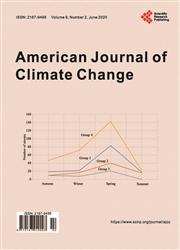Flooding in Informal Settlements: Potentials and Limits for Household Adaptation in Dar es Salaam City, Tanzania
引用次数: 6
Abstract
Rapid urbanization and climate change are compounding the vulnerability of the urban poor to natural hazards, particularly in the global south. Large number of the population in cities of developing countries live in informal settlements characterized with lack of infrastructure facilities and services. Majority of the informal settlements are located in risk areas such as low-lying lands and river banks whereby climatic threats associated with flooding are common. The urban informal settlements are thus disproportionately more vulnerable due to their greater exposure associated with their geophysical location, under-invested infrastructure facilities as well as poor housing quality. While it is widely acknowledged that the need to adapt to climate change related hazards such as flooding is no longer an option, literature suggests that potentials and opportunities for adaptation are unevenly distributed among global regions, communities, sectors, ecological systems as well as across different time periods. This study sought to explore the potentials and limits of households living in flood prone in an informal settlement of Magomeni Suna, Dar es Salaam Tanzania. The study employed a mixed method research design using both quantitative and qualitative data collection and analysis. Quantitative data were collected through a structured questionnaire administered to 199 randomly selected respondents, while non participant observation was used to capture information related to household physical adaptation measures. Key informant interviews were used to elicit data from purposively selected representatives of government and other local institutions. Two focus group discussions supplemented the data collected through the other methods. The results show that households employ multiple options for flood adaptation ranging from structural measures aimed at preventing flood water from entering the houses, to action oriented strategies such as relocation. The results also highlight there exist potentials like strong social networks, cohesive communities, and presence of various local institutions willing to support household responses to floods. Limitations to flood adaptation include little support and ad hoc intervention by government authorities, as well as meagre household income. To enhance household adaptation to flood hazards, policy measures towards enhancing social networks and community actions for flood adaptation are necessary. There is also a need to enhance multi institutional involvement as well as promote local livelihoods so as to improve household adaptation to floods.非正式住区的洪水:坦桑尼亚达累斯萨拉姆市家庭适应的潜力和限制
快速的城市化和气候变化加剧了城市穷人对自然灾害的脆弱性,特别是在全球南部。发展中国家城市中的大量人口生活在缺乏基础设施和服务的非正规住区。大多数非正规住区位于低洼地和河岸等风险地区,洪水带来的气候威胁很常见。因此,城市非正规住区由于其地球物理位置、基础设施投资不足以及住房质量差而暴露在更大的环境中,因此更加脆弱。尽管人们普遍承认,适应洪水等与气候变化相关的危害的必要性已不再是一种选择,但文献表明,适应的潜力和机会在全球区域、社区、部门、生态系统以及不同时期的分布不均衡。本研究旨在探索坦桑尼亚达累斯萨拉姆Magomeni Suna非正规定居点易受洪水影响的家庭的潜力和限制。该研究采用了一种混合方法的研究设计,使用了定量和定性的数据收集和分析。定量数据是通过对199名随机选择的受访者进行结构化问卷调查收集的,而非参与者的观察则用于获取与家庭身体适应措施相关的信息。关键线人访谈被用来从有意挑选的政府和其他地方机构代表那里获取数据。两次重点小组讨论补充了通过其他方法收集的数据。结果表明,家庭采用了多种适应洪水的选择,从旨在防止洪水进入房屋的结构措施到搬迁等以行动为导向的策略。研究结果还强调了存在的潜力,如强大的社会网络、有凝聚力的社区,以及愿意支持家庭应对洪水的各种地方机构的存在。洪水适应的局限性包括政府当局几乎没有支持和临时干预,以及家庭收入微薄。为了增强家庭对洪水灾害的适应能力,有必要采取政策措施,加强社会网络和社区适应洪水的行动。还需要加强多机构参与,促进当地生计,以改善家庭对洪水的适应能力。
本文章由计算机程序翻译,如有差异,请以英文原文为准。
求助全文
约1分钟内获得全文
求助全文

 求助内容:
求助内容: 应助结果提醒方式:
应助结果提醒方式:


